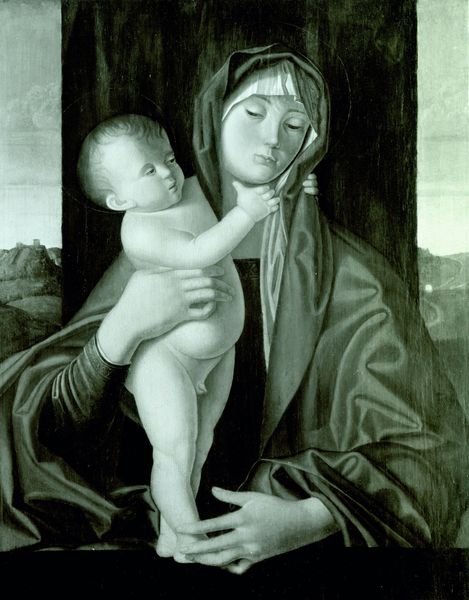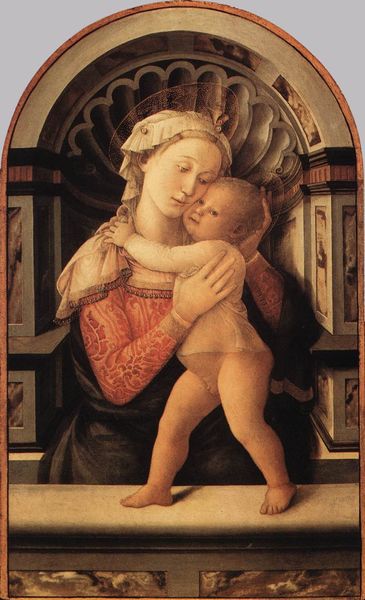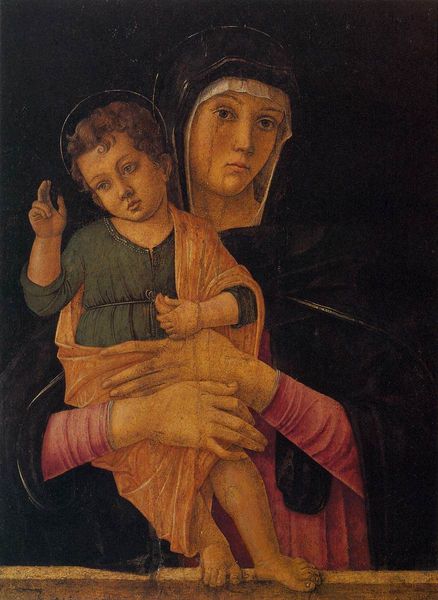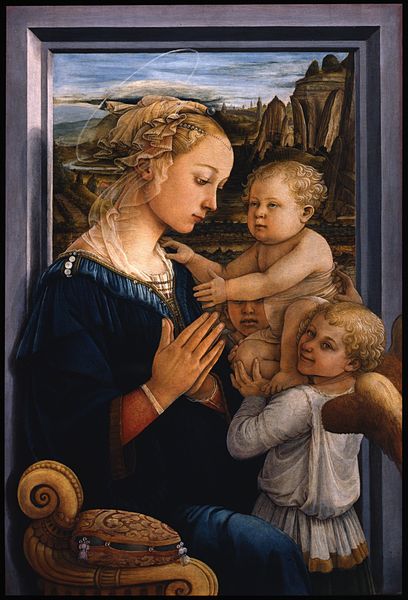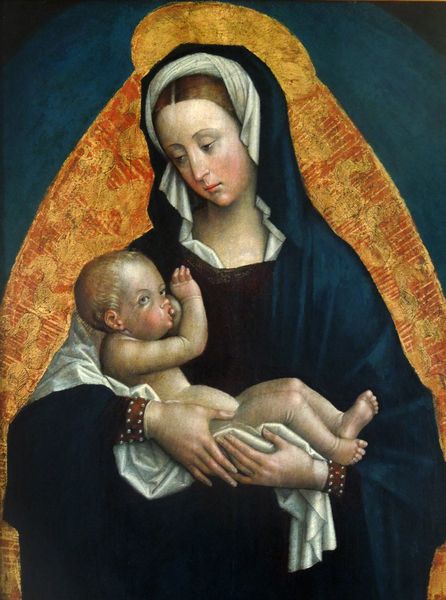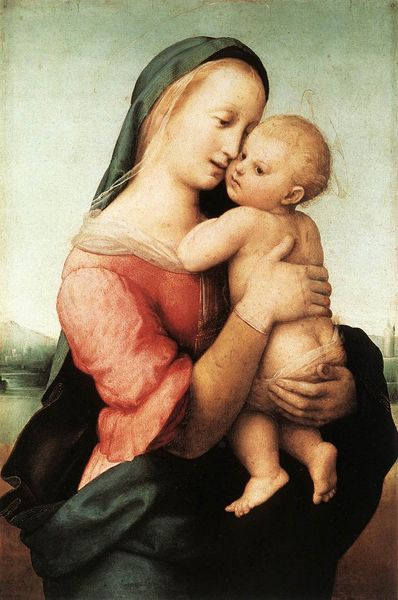
painting, oil-paint
#
portrait
#
painting
#
oil-paint
#
figuration
#
oil painting
#
christianity
#
history-painting
#
italian-renaissance
#
early-renaissance
#
virgin-mary
#
christ
Dimensions: 65 x 114 cm
Copyright: Public domain
Editor: Here we have Filippo Lippi's "Madonna Enthroned," painted in 1447. The oil paint application feels very intentional, almost…constructed. What strikes you most about this piece? Curator: It’s interesting to consider this "constructed" feel you mention in terms of labor. Look at the elaborate gilding on the throne. This wasn’t just Lippi’s skill, but involved specialized artisans. How does that division of labor affect the painting's value, its perceived 'aura' compared to, say, a fresco produced by one individual? Editor: So, it’s not just about Lippi's vision, but the collaborative effort of the workshop that produced it. Does the rising merchant class in Florence also affect this use of precious materials? Curator: Absolutely. Patronage during the Early Renaissance shifted. Wealthy families like the Medici used art patronage as a form of social currency. What statement does employing artists and artisans using expensive oil paints and gilding make about their place in the world? It’s a visible display of capital. Editor: It makes you wonder about the unseen labor behind such displays of wealth. And that gorgeous oil paint-- what colours! Were these pigments rare, affecting the value and the cultural capital the work conferred? Curator: Precisely. Consider the lapis lazuli used for the Virgin's robes – a pigment imported from distant lands, more expensive than gold in some instances! The material reality shaped the aesthetic and conveyed specific meanings tied to wealth, access, and, therefore, power. We move beyond simply admiring 'beauty' to understanding the social and economic forces at play in its creation. Editor: I'm seeing the painting with entirely new eyes! Considering art as material evidence changes everything. Curator: Exactly. It helps us unpack not only the visual experience, but also the very fabric of the society that produced it.
Comments
No comments
Be the first to comment and join the conversation on the ultimate creative platform.

